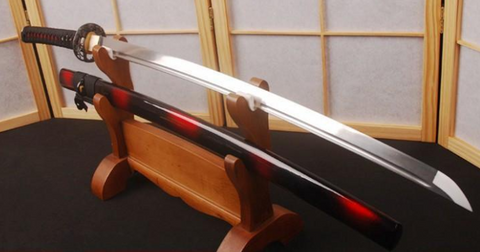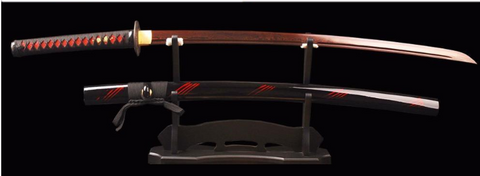The Magic of the “Blood Groove” (Bo-Hi)
3 minute read
Kuna’s Struggle
Kuna was frustrated. It seemed no matter how hard or long she practiced, she never could make her sword move as fast as she wanted it to. It was easy to cut with, and, once it got started, it would go through almost anything, but, when it came to anticipating an opponent’s movements or quickly changing direction, the sword never seemed as agile as she wished.
Her teacher had been watching her quietly grow more frustrated each session and finally made a decision. “Kuna”, he said and approached her. “You need a new sword.” “But sensei, this one is still in perfect shape”, she replied. “Yes, but the problem is not the condition of the blade”, he explained. “Your sword is too heavy for you: that’s why you struggle.” “Sensei, if I shorten the sword, my reach will be lessened”. Her instructor smiled. “Not necessarily” he said. “What you need is a sword with a Bo-Hi”.
“A Bo-Hi", she exclaimed, “What’s that?”
Featured Sword Terminology: The Bo-Hi
What Kuna’s sensei is referring to is a Bo-Hi (pronounced BOW-HEE): an indention that runs along the blade of a sword. The Bo-Hi’s purpose is to lower the weight of the blade, sometimes as much as an astonishing 20-35% without sacrificing strength, similar to how an I-beam is nearly as strong as a rectangular block of metal of the same size but with only a fraction of the weight. The longer the blade, the greater the effect. As weight limits the agility of the sword’s wielder, a Bo-Hi can allow a user to use a longer blade than would normally be practical. For wielders who like to use the sword for cutting, it may be better to get a sword without a Bo-Hi, as swords without them have the balance point shifted farther down the blade and are heavier, providing greater momentum.
Swords typically come with either none, one, or two Bo-Hi.
Examples
None
This sword has no Bo-Hi. We show it for reference.
Single
This sword has a Bo-Hi on only one side of the sword
Double:
This sword has a Bo-Hi on each side of the blade.
Kuna’s Answer
Kuna swung her new sword and listened to it whistle through the air. “This is amazing, Sensei.” The balance was a little different then she was used to, but she was pleased with how quickly she could twist and turn the blade. “Once I get used to this, my opponents had better watch out!” She continued practicing. Watching her, her sensei smiled again.
Fun Fact
The bo-hi amplifies the “swishing“ sound swords make as they travel through the air, making it popular for martial arts demonstrations and movies.
Etymology
Sometimes mislabeled as “blood groove”, the name has nothing to do with blood. In Japanese kanji, Bo-Hi is written as 棒樋,where Bo (棒) means weapon, and Hi (樋 ) means trough or gutter. So it would translate literally to something like “weapon-groove”.
Filter By Bo-Hi

You can filter by "No Bo Hi", "Single Bo Hi" and "Double Bo Hi" in each sword collection, under Refine in the left sidebar, as shown here to the left.
Give it a try!
Tags: Katana · Katana Sword · katana sword for sale · ninja sword · ninja sword for sale · odachi-sword · Samurai Sword · samurai sword for sale · Sword · sword for sale · sword-making · sword-types · tachi-sword · tanto knife · tanto sword · tanto sword for sale · tanto sword UK · wakizashi sword ·



